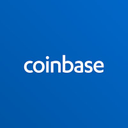
Review on Atomic Swap Wallet by Alex Martakov

After evaluating the work of atomic swap, we can conclude that the idea is…
After evaluating the work of atomic swap, we can conclude that the idea is promising for the creation of technology for the exchange of digital assets on a trustless basis. Need more time and experience in the practical application before you will be able to clearly say how it should be implemented the idea of the atomic swap. However, today there are decentralized exchanges that use atomic swap: BarterDEX on the Komodo platform, Altcoin, as well as the 0x project. The fact that there is a demand for such exchange technology indicates the needs of the modern digital economy.
Pros
- Atomic swap uses so-called time-limited locks (HTLC). In fact, these are contracts that are supported by the accounting system of the digital currency itself. A pair of special contracts ensures that if the coins of one currency change the owner, then the coins of the second currency too. And if one of the parties to the contract does not confirm the transfer in time, the coins will return to their original owners back. Thus, the coins of both currencies are blocked until all the conditions are met and confirmed. Either the exchange of coins will be performed atomically, or it will be rejected completely.
Cons
- So – called dark pools-a special orderbook in which no one sees orders-cannot yet be implemented in decentralized exchanges. This approach is used in centralized exchanges to hide offers to exchange large amounts, because they can manipulate the market. To implement dark pools in a decentralized exchange, it is necessary to use complex cryptography. In addition, operations with Fiat currencies will not yet be available in decentralized exchanges. Fiat currencies do not have an accounting system where you could register a smart contract. Therefore, it is not possible to perform atomic swap between Fiat and digital currencies. With the massive use of atomic swap, there is a problem that is hard to solve. Let's say that there is an accounting system, within which a very high fee for processing transactions is charged, and the transactions themselves are confirmed for a very long time. Users start selling this currency because it has low bandwidth and create orders on a decentralized exchange, but these orders when executed create smart contracts in the same blockchain as the currency they are trying to sell. Thus, the network is loaded even more, the pending transactions form an even larger queue and users are even more eager to sell this currency, placing more orders and increasing the transaction queue.












